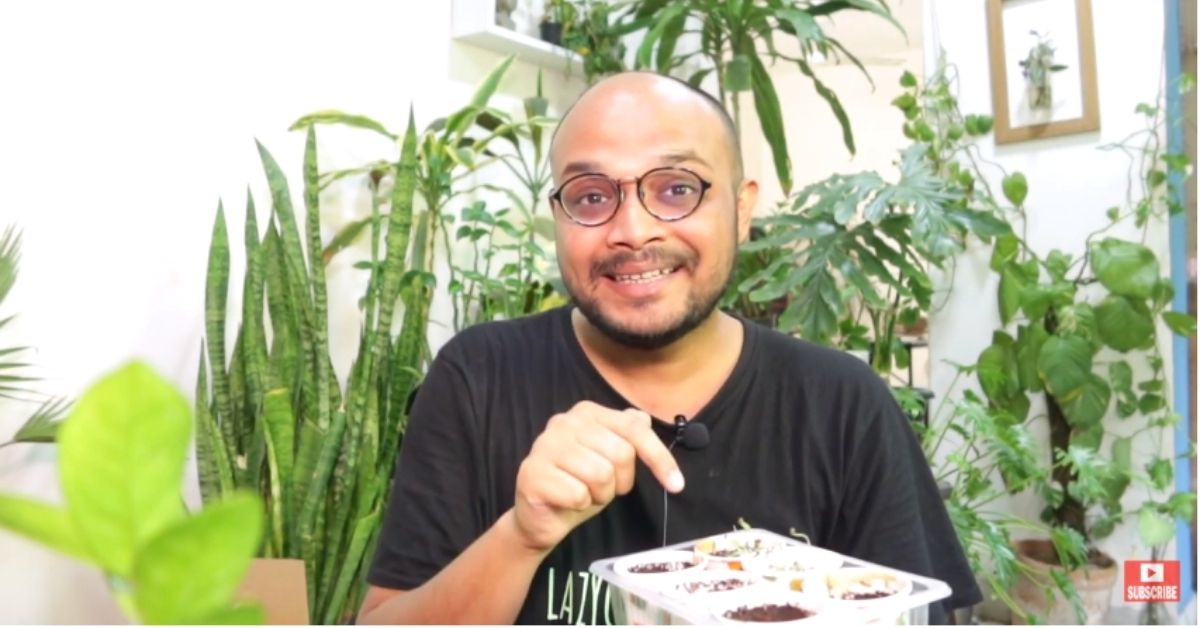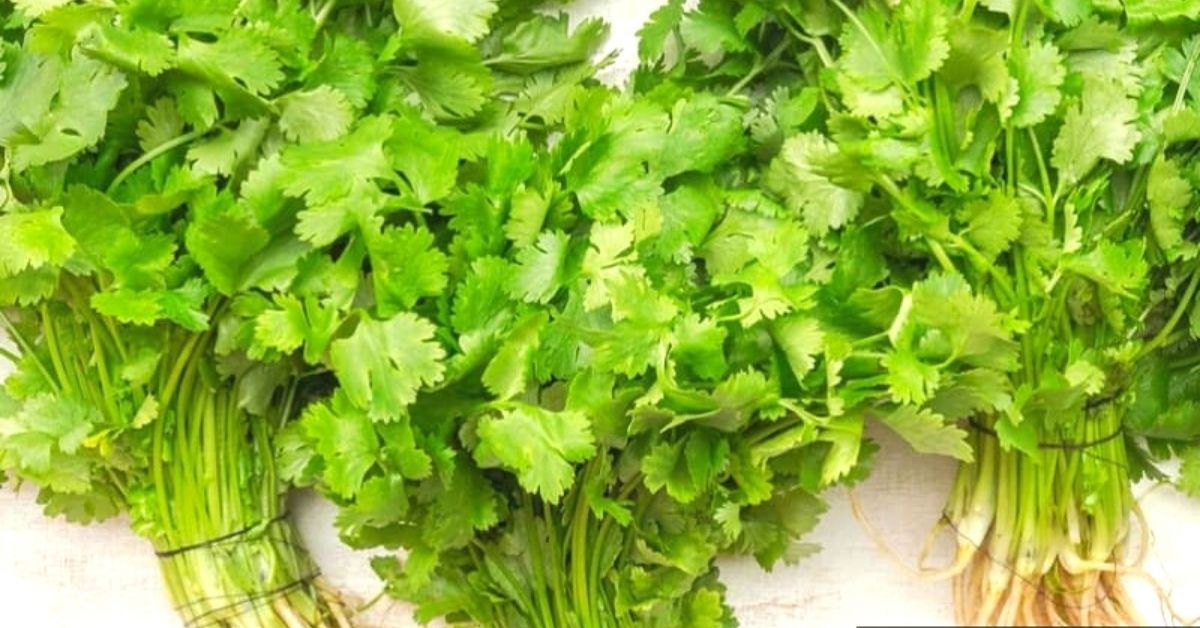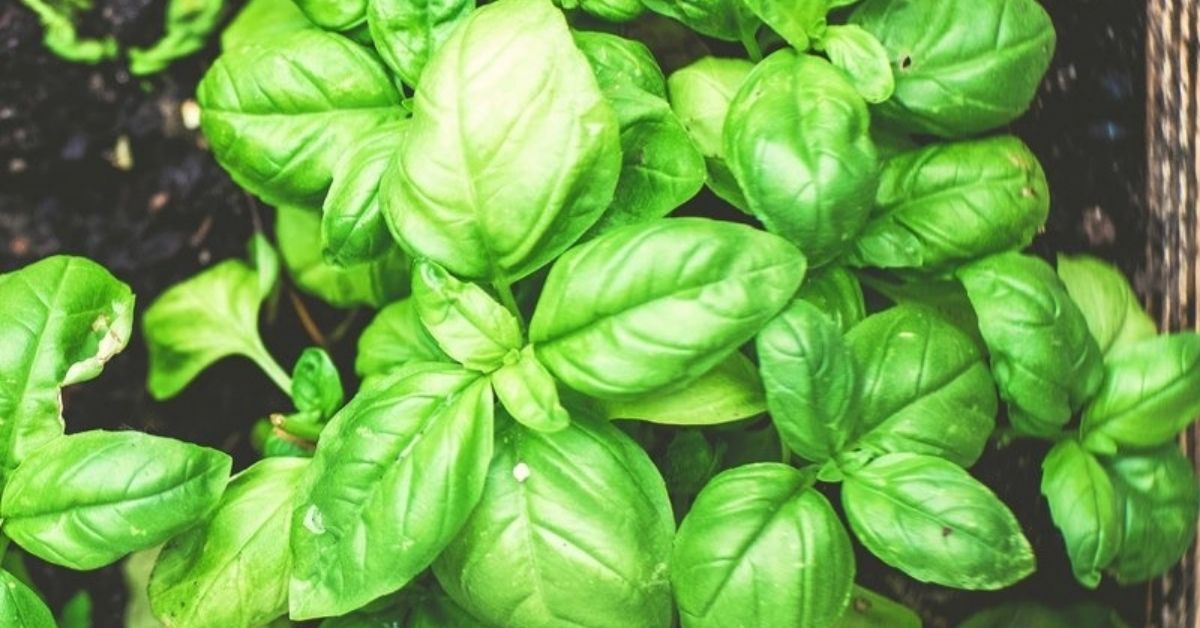Dhania to Methi: IIT Alumnus Shares How to Grow Essential Indian Herbs at Home
The brain behind viral YouTube channel 'Lazy Gardener', IIT-D alumnus Vinayak Garg shares simple tricks and tips to grow tulsi, garlic, methi , dhania and curry leaves at home

We are in the middle of winter — arguably the best season to grow the healthiest leafy vegetables and herbs. And according to a Delhi startup, coriander, fenugreek, and even garlic, are possible to grow in a small tray in your balcony, right under the winter sun.
Vinayak Garg, an alumnus of IIT Delhi, founded the Lazy Gardener to provide easy solutions for urban gardeners. Speaking with The Better India, he provides simple tips and tricks to grow healthy herbs at home. The startup lists five “must-have” herbs in your garden, so a variety of flavours for your food can be within hands reach.
Coriander

“Coriander seeds usually take about a month to germinate. To reduce this time period and increase the success rate, an easy method can be followed,” Vinayak says.
The first is to split the seeds in two parts. “Remember to not crush them. Soak the seeds in water overnight, and then plant them in a loose layer of soil. Keep the soil moist by spraying or sprinkling water,” he adds.
Vinayak says it will take 14 days for the seeds to germinate. “Do not give up if the seeds show a slight delay in germination. This could be mainly because of less moisture in the air due to winters. Keep watering the tray/pot, and soon, sprouts will start appearing,” he says.
The coriander plant can continue to be harvested till it starts flowering. “Once the plants start bearing flowers, the taste will change, and it is time to change the plant,” Vinayak adds.
Basil

Vinayak says the aforementioned method can be applied for basil seeds as well. “However, you do not need to split the seeds in this case. Make sure they’re covered, and the soil is moist. Germination starts within a week or ten days,” he adds.
He says the only thing to be careful about with the plant is its density. “Unlike coriander, which bears thin stems, basil grows one thick stock with leaves sprouting from it. Hence, the plants should have a couple of inches of distance between them. One way to ensure this is by removing the unhealthy seeds once the healthier ones start growing,” he explains.
Vinayak recommends that once the leaves start to grow, the plant should be moved to a brighter area, but not be exposed to direct sunlight. The holy basil and thai basil can both be grown using the same method. The plants will continue to regenerate under optimal conditions.
Garlic

“The simplest way to grow the herb is by submerging the seeds in water kept in a flat-bottomed container,” Vinayak says.
He adds that once the shoot starts growing, the container should be placed in the soil. “However, it is difficult to ascertain when the plant has grown cloves, as they would be underground. The best way to know this is to observe when the growth of the plant saturates. It would take about five to six months for the plant to mature and be ready for harvest,” Vinayak says.
He also says that to use garlic leaves, the cloves need to be separated, and the flat bottom needs to go inside the soil again. “The clove is to be completely buried under the layered soil. Once the shoots start growing, they can be cut as required,” he says.
The gardener says the same method can be applied to plant spring onions and use it either way (the bulb, or the leaves).
Curry leaves

“Planting curry leaves is easy, but requires patience,” Vinayak says. He adds, “The seed is bigger, which means there are better chances of germination. To increase these chances, make sure the seed is mature and black. If the seed is green, it’s not ideal for plantation.”
He adds that curry leaves grow best when sown in different paper cups in loose soil. “It will take 10 to 15 days for the seeds to germinate, and once tiny shoots begin growing, the plant can be moved to a bigger pot. Once it grows a few inches, you must move it to a spot with good sunlight,” he tells The Better India.
The urban gardener cautions that it would not be advisable to use the curry leaves in the initial months. “The leaves are the powerhouse of plants to conduct photosynthesis. Hence, the plant should be allowed to grow and mature well before the leaves are used. The ideal way is to observe when the green stem thickens and changes its colour to brown,” he says.
The entire process would take about a year. “However, some portion of the stem could be used if it’s ensured that the majority of the plant is growing. Make sure the leaves are at least a centimetre thick.” he says.
Fenugreek or Methi

Vinayak says Fenugreek is probably one of the easiest plants to grow, and adds that this plant is extremely popular during kids’ workshops. “Fenugreek seeds provide instant results. They only take a day or two to germinate,” he says, adding that an interesting fact is fenugreek serves as both a greeny leafy vegetable as well as microgreens.
For fenugreek to be used as microgreens, the seeds need to be planted close together. “Once they grow a couple of inches, they can be harvested. However, once cut, the same plant will not grow again, and a different one needs to be planted,” Vinayak says.
He adds that fenugreek seeds bear yellow leaves. “Move the plant to expose it to better sunlight, but indirectly. The leaves will turn green in a couple of days, and the plant will be ready to harvest when it is mature,” he says.
The same method is applicable for mustard, he adds.
Bonus tips
Watch the video to grow mustard microgreens?

Vinayak says a common complaint from fellow urban gardening enthusiasts is the growth of fungus during the germination process. “As there is plenty of moisture and water, it becomes an ideal ground for fungus and bacteria to grow. However, if the seeds are well spaced out, and provided good ventilation, the issue will not arise,” he says.
Another advice he offers is to ensure the seeds remain in shade during the germination and initial growth process. “Germination and growth require a lot of water and moisture in the soil. The plants consume large amounts of water. Exposing them to the sun will accelerate the evaporation process and increase the need for water. Hence, exposure to direct sunlight would not help,” Vinayak says.
If you found our stories insightful, informative, or even just enjoyable, we invite you to consider making a voluntary payment to support the work we do at The Better India. Your contribution helps us continue producing quality content that educates, inspires, and drives positive change.
Choose one of the payment options below for your contribution-
By paying for the stories you value, you directly contribute to sustaining our efforts focused on making a difference in the world. Together, let’s ensure that impactful stories continue to be told and shared, enriching lives and communities alike.
Thank you for your support. Here are some frequently asked questions you might find helpful to know why you are contributing?


This story made me
-
97
-
121
-
89
-
167











